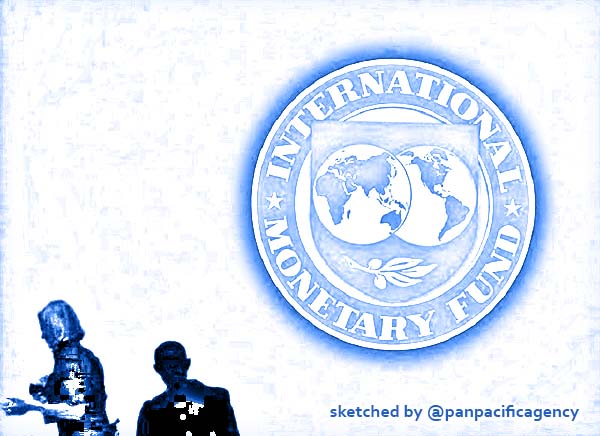Chinese economy normalising but stark risks remain: IMF

The US economy was on track to grow 2.6 per cent this year, slightly faster than its 2.3 per cent growth forecast from April, the IMF said. — Reuters pic. Sketched by the Pan Pacific Agency.
WASHINGTON D.C., Mar 21, 2020, Reuters. China’s economy is beginning to show some signs of normalisation after the full-blown shock caused by coronavirus but stark risks remain, International Monetary Fund officials said in a blog on the economic impact of the pandemic, The Business Times reported.
Most larger Chinese firms have reopened and many local staff have returned to work but infections could rise again as national and international travel resumes, the officials said.
Outbreaks in other countries and financial market gyrations could also make consumers and firms wary of Chinese goods, just as the economy is getting back to work, they said.
The coronavirus, which has infected 250,000 people and killed more than 10,000, has wreaked havoc on the global economy. In China, the slowdown in the first quarter will be significant, leaving a deep mark on the full year, the IMF said.
“What started as a series of sudden stops in economic activity, quickly cascaded through the economy and morphed into a full-blown shock simultaneously impeding supply and demand,” the IMF blog said, citing very weak industrial production and retail sales data in January and February.
But it said China’s response thus far showed that the right policies made a difference in fighting the disease and mitigating its impact, albeit with tough economic tradeoffs.
Chinese policymakers needed to be ready to continue to support growth and financial stability, if necessary, and to coordinate internationally, the IMF said.
Helge Berger, the IMF’s China mission chief and lead author of the blog, said fiscal policy had an important role to play as Chinese authorities worked to mitigate economic shock and support the recovery.
China is expected to unleash trillions of yuan of fiscal stimulus, backed by as much as 2.8 trillion yuan (US$395 billion) in local government bonds, to revive its economy, four policy sources told Reuters on Thursday.
“While it is too early to speak about some of the proposals being discussed, it will be helpful to provide a mix of measures that is on-budget (and) well-targeted to help those most affected by the current crisis,” Mr Berger told Reuters.
The blog said China’s strict constraints on movement at the height of the outbreak had devastated Hubei province, where the virus originated, but clearly slowed the spread of the disease.
It said Chinese policymakers acted quickly to help vulnerable households and small businesses, waiving social security fees, utility bills and channelling credit through fintech firms, as well as arranging subsidised credit to support scaling up production of medical equipment.
In addition, authorities worked to incentivize banks to lend to smaller firms and cut reserve requirements, while continuing to lend generously to larger firms and state-owned enterprises.